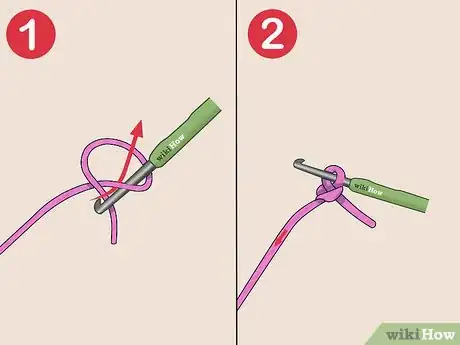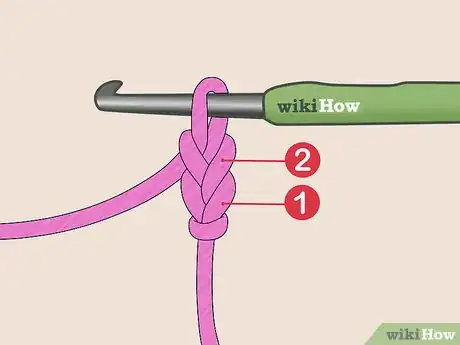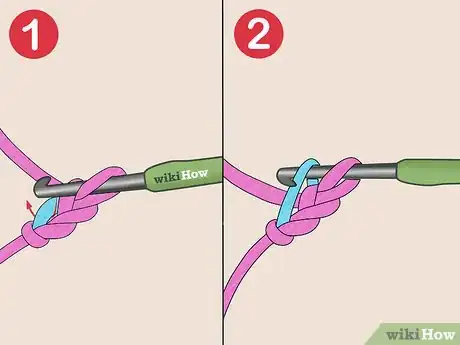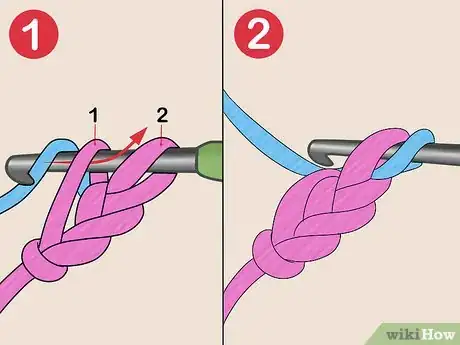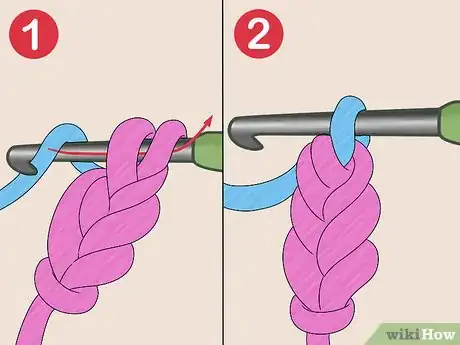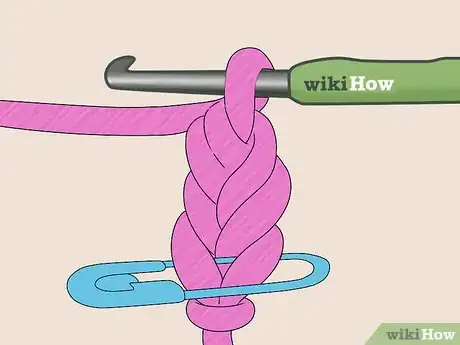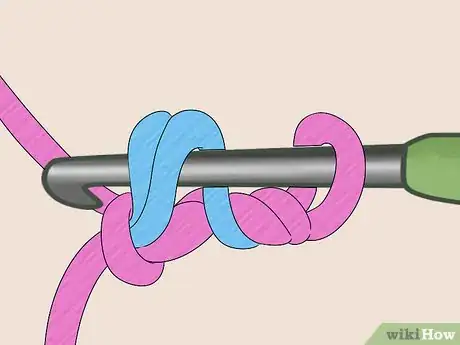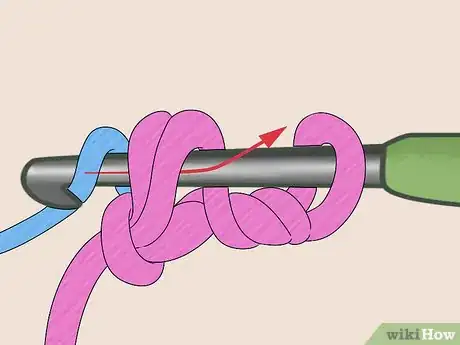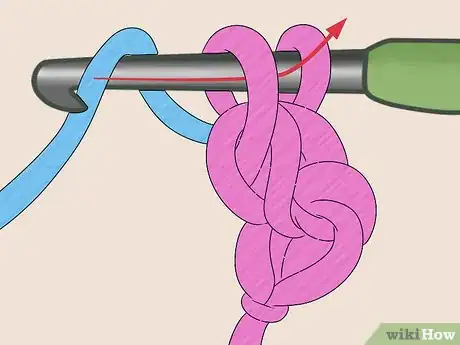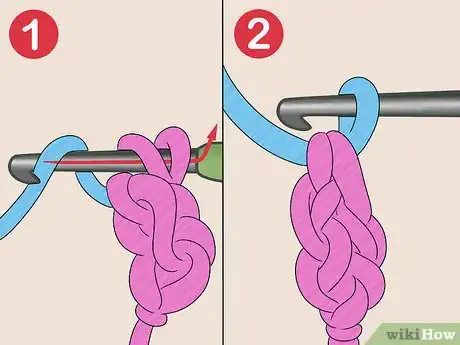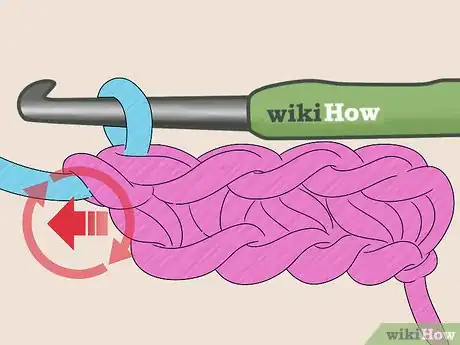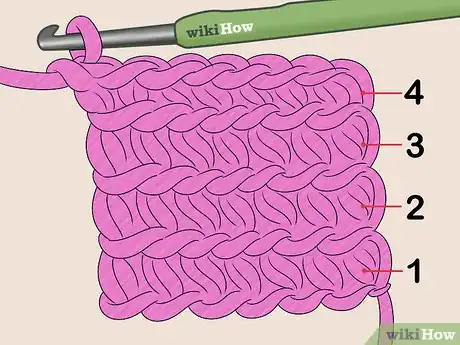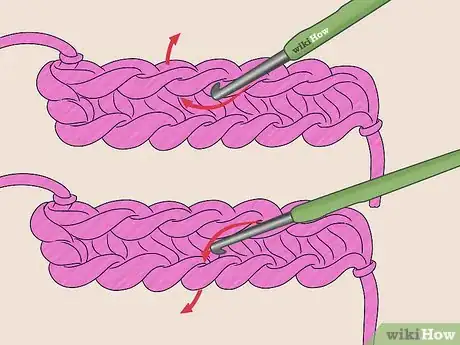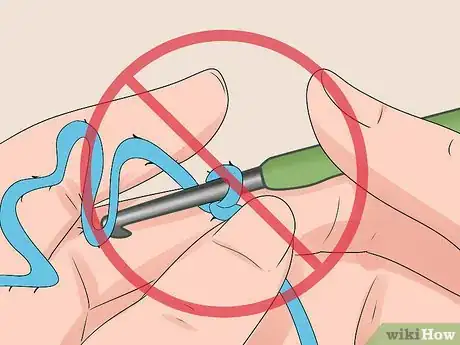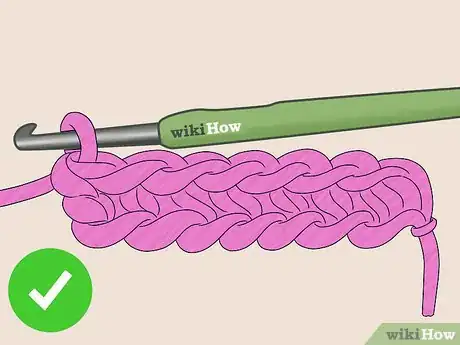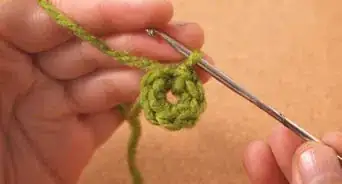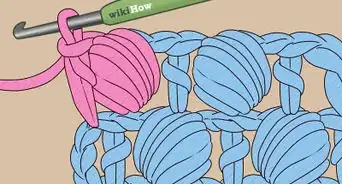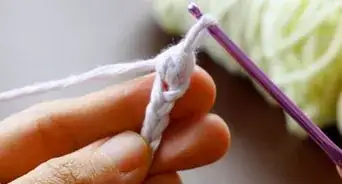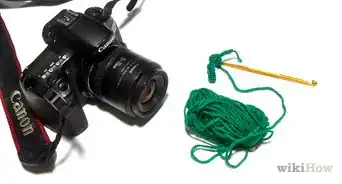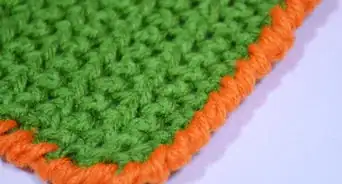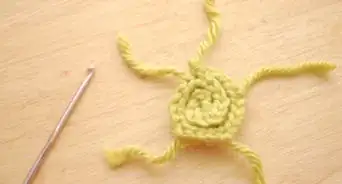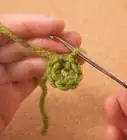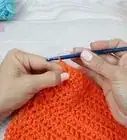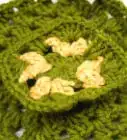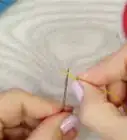This article was co-authored by wikiHow Staff. Our trained team of editors and researchers validate articles for accuracy and comprehensiveness. wikiHow's Content Management Team carefully monitors the work from our editorial staff to ensure that each article is backed by trusted research and meets our high quality standards.
This article has been viewed 58,967 times.
Learn more...
Foundation single crochet (FSC) is a stitch that combines the chain row and the first single crochet row. Using FSC instead of separate rows of chain and single crochet can simplify the beginning of a crochet project. The stitch is also easy to learn. You will start the stitch using basic crochet techniques then work the rest of the row using a different sequence. Try using FSC to start your next crochet project and save yourself a little time. It will create an even edge at the start of your project.
Steps
Crocheting the First Stitch
-
1Make a slipknot. Before you can start the foundation single crochet row, you need to make a slipknot. Begin by wrapping yarn around your finger twice then pull one loop through the other to make a loop with a knot on the end. Slide the slipknot onto your hook and tug the yarn to secure it.[1]
-
2Chain two. Next, chain two stitches. To do this, loop the yarn over the hook in front of your slipknot. Pull the new yarn through the slipknot to make one chain. Then, yarn over and pull it through again to make the second chain.[2]Advertisement
-
3Insert hook into the first chain and yarn over. Identify the first chain made and insert the hook into this chain. Loop yarn over hook and pull it through the chain. At this point, you will have two loops on your hook.[3]
-
4Loop yarn over and pull through. Next, loop yarn over hook and pull it through the first loop on the hook. This will make a chain of one and you should still have two loops on your hook.[4]
-
5Loop yarn over and pull through both loops. To complete the stitch, yarn over your hook again and pull yarn through both loops on the hook. You will have one loop on the hook and you are now ready to continue the row.[5]
-
6Mark your first stitch with a stitch marker. It can be helpful to mark the first stitch in the row with a stitch marker. You may want to do this the first few times that you use the foundation single crochet stitch. Place the stitch marker through the first single crochet stitch.[6]
Continuing the Foundation Row
-
1Insert your hook into the stitch just made. To continue the row, you will follow a shorter sequence than what you used to create the first row. Start by inserting your hook into the stitch just made. If you placed a stitch marker here, it should be easy to locate.[7]
-
2Loop yarn over and pull through the stitch. Next, loop yarn over hook and pull it through the stitch. You now have two loops on your hook.[8]
-
3Yarn over again and pull through one loop. Loop yarn over hook again and pull it through the first loop on your hook to make a chain. You will have two loops on your hook at this point.[9]
-
4Do one more yarn over and pull through both loops. To complete the stitch, loop yarn over hook again and pull it through both loops on your hook. This will leave you with one loop on your hook again and you will be ready to start the sequence over.[10]
-
5Repeat the sequence to the end of the row. Continue the sequence for this stitch until you have the desired number of stitches in your row. You can then continue your project.[11]
Identifying Advantages of the FSC Stitch
-
1Check the gauge of your yarn. You cannot get an accurate gauge of your yarn by crocheting a chain. However, the FSC stitch is a good way to quickly check the gauge of your yarn.[12] Make a 4” row of FSC stitches and count them to determine the gauge of your yarn and hook. This could be a huge time saver if you are trying to determine your gauge for a project.
-
2Crochet into the top and bottom of the row. Another great advantage of the FSC stitch is that the top and bottom rows look the same. This means that you can work into the top and bottom rows and get the same results.[13] Therefore, the FSC stitch is a good option if you want to work on both sides of your foundation row. It is ideal for crocheting ovals like the sole of a slipper or baby bootie.
-
3Avoid having to redo your first row. It is common to miscount the links in your chain when crocheting a large piece, and it can be a time consuming error. You may end up having to start over if you don’t notice the error until working the first row of your project. By using the FSC stitch, you can count the stitches easily as you go and you will be less likely to make a mistake with the number of stitches.[14]
-
4Get a neater look. The FSC stitch produces a neater looking first row than by making a chain and crocheting into it. If you have noticed that your projects tend to look a little sloppy when you start them with a chain, try switching to the FSC stitch for your next project. This will give better results once you master the stitch.[15]
Things You’ll Need
- Yarn
- Crochet hook appropriate for the yarn type that is used. Check the yarn label for the correct size to use.
- Stitch markers
References
- ↑ https://www.craftsy.com/blog/2015/05/foundation-single-crochet-how-to/
- ↑ https://www.craftsy.com/blog/2015/05/foundation-single-crochet-how-to/
- ↑ https://www.craftsy.com/blog/2015/05/foundation-single-crochet-how-to/
- ↑ https://www.craftsy.com/blog/2015/05/foundation-single-crochet-how-to/
- ↑ https://www.craftsy.com/blog/2015/05/foundation-single-crochet-how-to/
- ↑ https://www.purlsoho.com/create/foundation-single-crochet-fsc/
- ↑ http://newstitchaday.com/fsc-foundation-single-crochet/
- ↑ http://newstitchaday.com/fsc-foundation-single-crochet/
- ↑ http://newstitchaday.com/fsc-foundation-single-crochet/
- ↑ http://newstitchaday.com/fsc-foundation-single-crochet/
- ↑ http://newstitchaday.com/fsc-foundation-single-crochet/
- ↑ http://www.futuregirl.com/craft_blog/2009/3/tutorial-foundation-single-crochet.aspx
- ↑ http://www.futuregirl.com/craft_blog/2009/3/tutorial-foundation-single-crochet.aspx
- ↑ http://www.futuregirl.com/craft_blog/2009/3/tutorial-foundation-single-crochet.aspx
- ↑ http://www.futuregirl.com/craft_blog/2009/3/tutorial-foundation-single-crochet.aspx
About This Article
To foundation single crochet, start by making a slipknot, then chain 2 stitches. Next, insert the hook into the first chain, yarn over, and pull it through. Loop the yarn over and pull through the first loop on your hook before looping over again and pulling through both loops. To continue the row, put the hook in the stitch you just made, loop the yarn over and pull through the stitch, yarn over and pull through 1 loop, and yarn over and pull through 2 loops. Repeat this process until you're at the end. To learn about the advantages of foundation single crochet, such as a neater look, read on!
